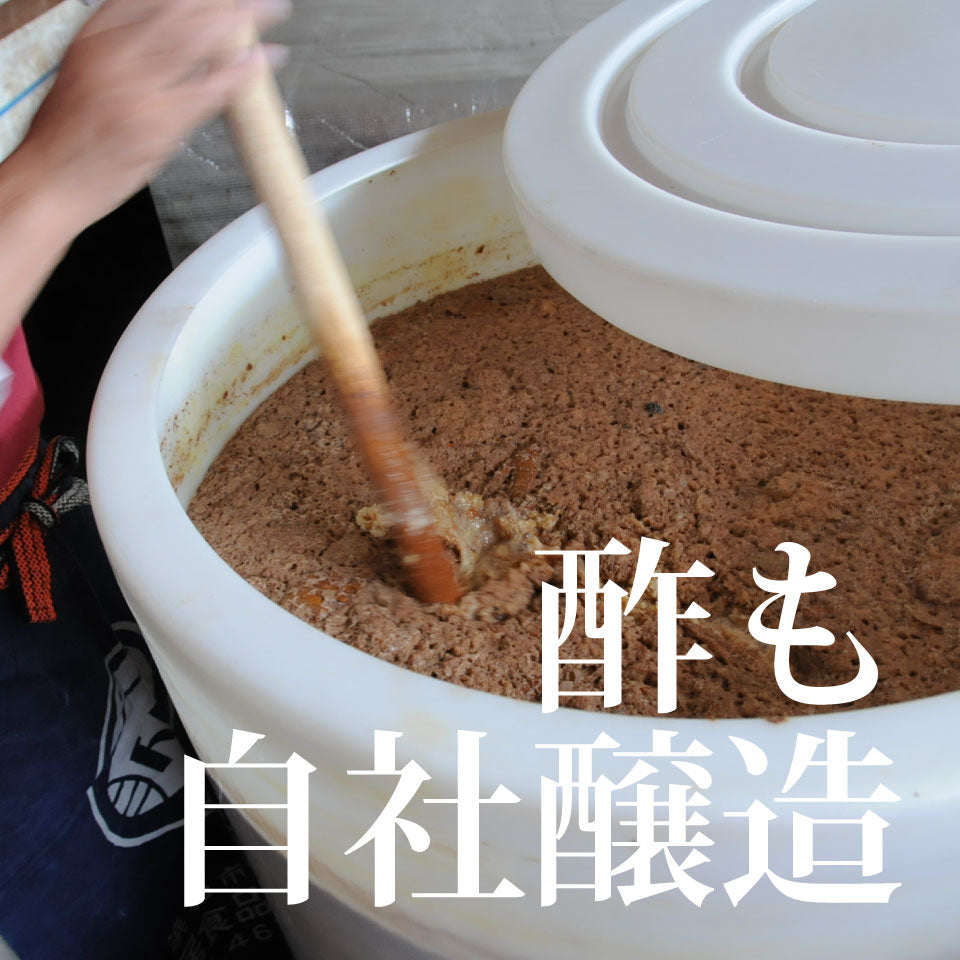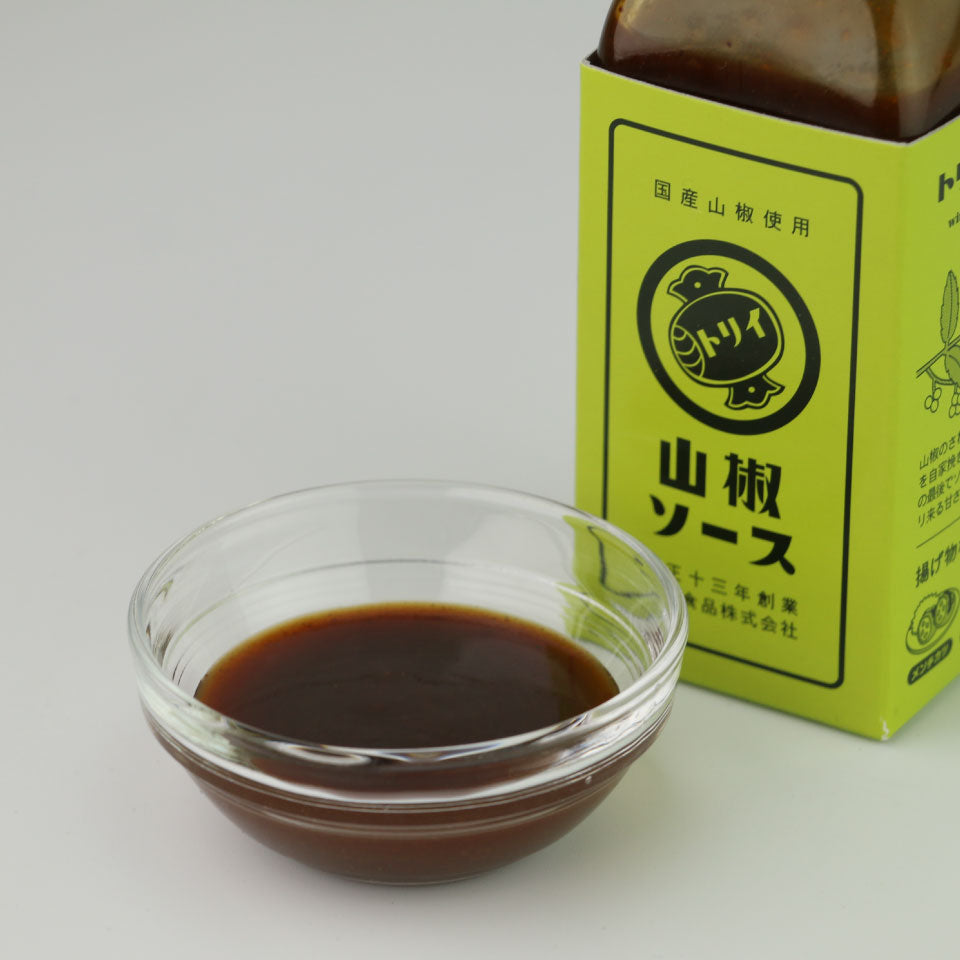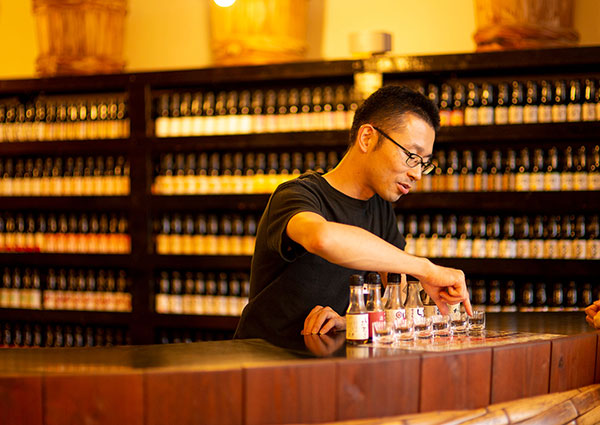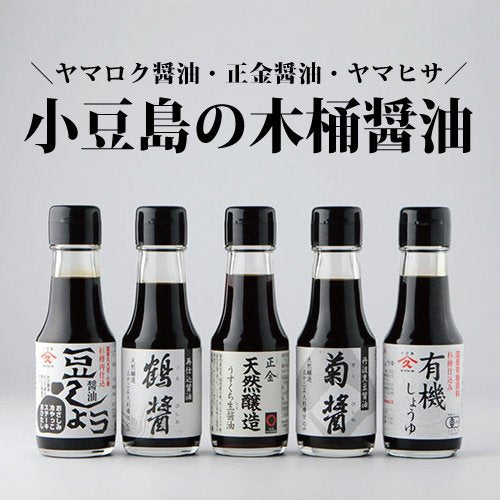













Sansho sauce (Torii sauce)
A fragrant bottle that will appeal to sansho pepper lovers
Shokunin Shoyu No. 3097

A sauce shop in Kakegawa, Shizuoka that has been in business for 100 years
"It has to be this sauce" - you can almost hear this sentiment expressed by a local who continues to love the sauce. Torii Sauce, located in Kakegawa City, Shizuoka Prefecture, is a long-established sauce manufacturer founded in 1924.
The main ingredients of a dish are vegetables, meat, and fish, and condiments are considered to be supporting ingredients that enhance the flavor of the main ingredients.Their aim is to create sauces that are not just "delicious" on their own, but that are delicious when combined with the food.
The ingredients of the sauce are surprisingly unknown. President Torii Daisuke explains, "Soy sauce adds saltiness and umami, while sauce adds sourness and umami." The source of sourness is vinegar, and the source of umami is vegetables. Adding spices to these makes the sauce.
Torii Sauce's sauces are made by slowly simmering 100% domestically produced vegetables and fruits, and are characterized by their deep richness and gentle sweetness. They continue to adhere to a manufacturing method that does not use food additives and values the natural flavor of the ingredients.
Torii Sauce's Commitment
1. Whole raw vegetables
The first time I tried Torii Sauce, I thought, "Hmm, it's kind of mild..." And it turns out it's because they simmer whole, skin-on, domestically grown vegetables, including carrots, onions, tomatoes, and even celery. And they use real vegetables, not powders or concentrates. Perhaps that's why it has a smooth texture and a refreshing aftertaste.
When you think of sauce, you might imagine something "strongly seasoned," but Torii sauce doesn't get in the way of the food, but rather enhances it. It has a gentleness that makes you think, "This is the first time I've ever tried a sauce like this." I think this is what makes Torii so great.

2. In-house brewed vinegar
Vinegar is a great supporting actor that brings out the flavor of the sauce.
Torii Sauce even makes their own vinegar in-house. They use domestically produced rice and sake lees, which are left to ferment slowly and carefully using the traditional static fermentation method. Fermentation and aging takes time, but this results in a smooth, rounded, and acidic taste.
Many people probably don't pay much attention to the vinegar in sauces, but I really love the sourness of this sauce. It's not too sharp, but it brings the flavors together nicely, making it a great supporting actor.

3. Original spices
Speaking of sauces, spices are essential. It is common to grind spices into powder and add them to the sauce, so that the aroma of the spices can be efficiently absorbed into the sauce.
However, at Torii Sauce, the spices are placed in a strainer bag in their original form (or coarsely ground) and then soaked in the sauce. This is to ensure that only the aroma is dissolved into the sauce, and that the bitterness does not interfere with the flavor. What's even more amazing is that the soaking temperature is divided into two stages. There are spices that can withstand heat and spices that can't, and this is apparently to ensure that only the desired aroma is thoroughly dissolved.
The idea is to put spices in a bag and steep them, but Torii explained, "It might be easier to understand if you imagine tea brewed in a teapot and powdered tea. Tea brewed in a teapot has less impact, but it goes down smoothly. Powdered tea has a straightforward taste, but still retains a bitter aftertaste."
It's amazing how much care and attention they put into it! I think that effort really shows in the flavor. The aroma of the spices is strong, but not at all cloying, and it has depth without any unpleasant aftertaste, yet is gentle.

4. Maturing in wooden barrels
Torii Sauce simmers Worcestershire sauce and ages it in wooden barrels. Isn't it a bit shocking to know that a sauce factory has wooden barrels?
The sauce is aged in wooden barrels to even out the flavor and concentrate the umami flavors passed down through generations. While aging can make the flavor more rounded, if the saltiness is too even, the flavor becomes dull. Torii Sauce has used its many years of experience to find the perfect balance between aging for about a month.
Many of Shokunin Soy Sauce's customers are very impressed with the wooden barrels. Sauces brewed in wooden barrels are extremely valuable!!



The base is a sauce aged in a wooden barrel
The sansho sauce is based on Chunou sauce, which in turn is based on Worcestershire sauce, which is aged in wooden barrels.
Once the Worcestershire sauce is ready, it is placed in this vat. Then, the raw material for Chuno Sauce is extracted. It is like a sauce that is added to a new container, and it apparently stays in this vat for an average of two months between the time it is poured in and the time it is removed.

A unique manufacturing method that maximizes the aroma of sansho pepper
Until now, the scent of sansho pepper would dissolve in the water, making it impossible to fully utilize the distinctive scent of sansho pepper. Therefore, they changed the manufacturing method so that the sansho pepper berries are crushed just before production (the day before) and mixed with oil, sealing in the scent of sansho pepper with the oil.
The oil used is rice oil, which has a relatively mild aroma that does not interfere with the aroma of the sansho pepper.The sansho pepper is soaked in this rice oil and then placed in a pot at the very end of the sauce production process, where it is bottled with minimal heat.

A must-try for sansho enthusiasts
"I love sansho pepper!" Customers like this often come to the store, and some even buy in bulk because they "can't come here often." Once you become addicted to this sansho pepper sauce, you won't be satisfied with anything else.
The appeal of this sansho sauce is undoubtedly its elegant aroma, which is achieved by using green sansho peppers grown locally in Haruno Town. The sansho aroma is fully captured, so the aroma is different from the moment you open the bottle. The refreshing citrus flavor is an exquisite match with the sweetness of the medium-thick sauce, making it an unforgettable taste once you try it. Drizzle it over pork cutlets or fried chicken fillets for a refreshing taste, just like a squeeze of lemon.
However, true sansho enthusiasts say with a smile, "I put it on everything." I understand that feeling very well.

How about using it like this?
Sansho sauce is a sauce that surprisingly goes well with Japanese side dishes. Enjoy the changing flavors little by little, just like a condiment.
・Use it as a sauce for grilled meat to lighten the oiliness. ・Add a little to grilled fish for a refreshing aroma.・Suitable for grilled eggplant or chilled shabu-shabu - a great summer side dish・Fried chicken and deep-fried tofu - a unique way to enjoy the flavor

\Recommended for these people/
・People who like Japanese pepper and want to add a fragrant accent to their dishes ・People who are getting a little tired of sweet sauces ・People who want to give their everyday side dishes a more sophisticated finish
Text: Miho Matano (Shokunin Soy Sauce)
Choose options









































